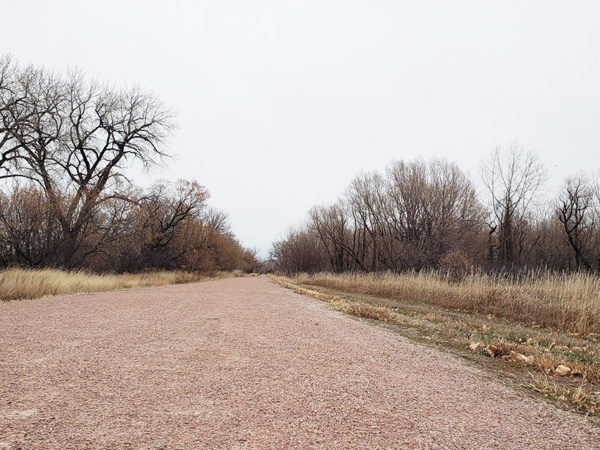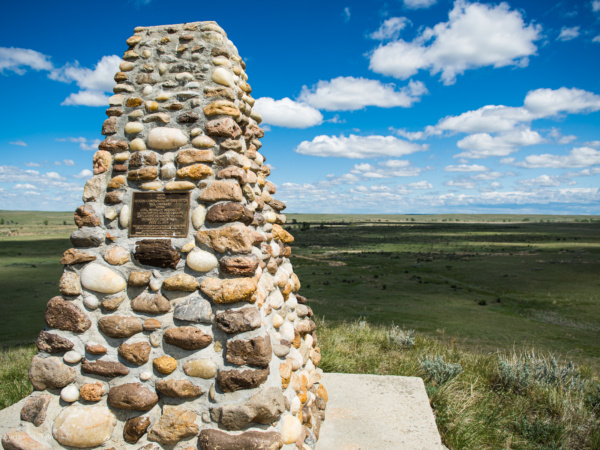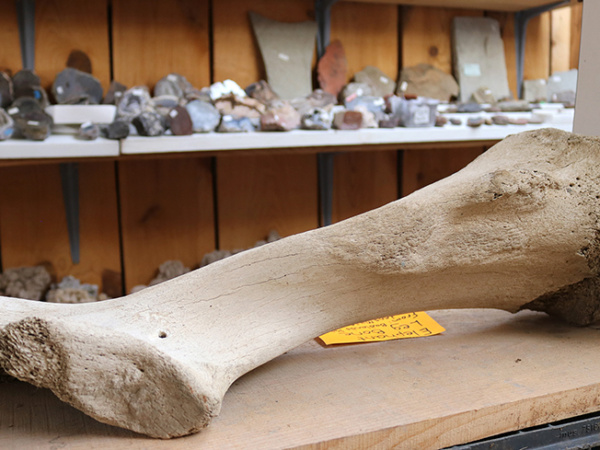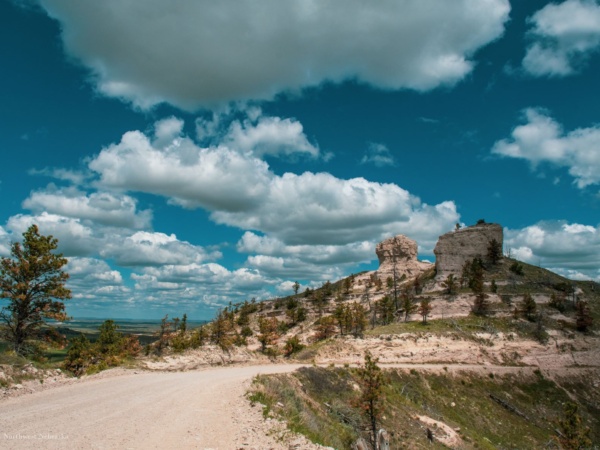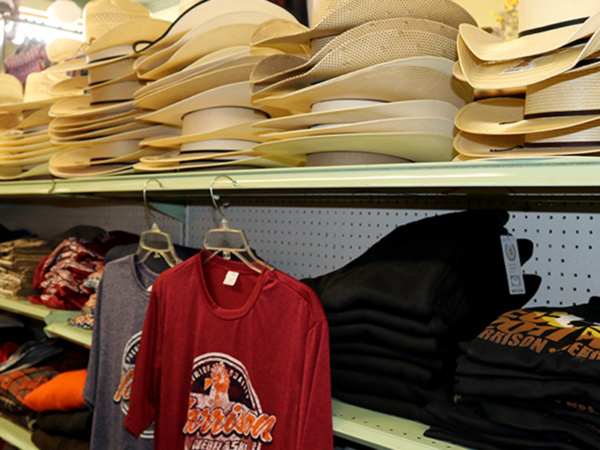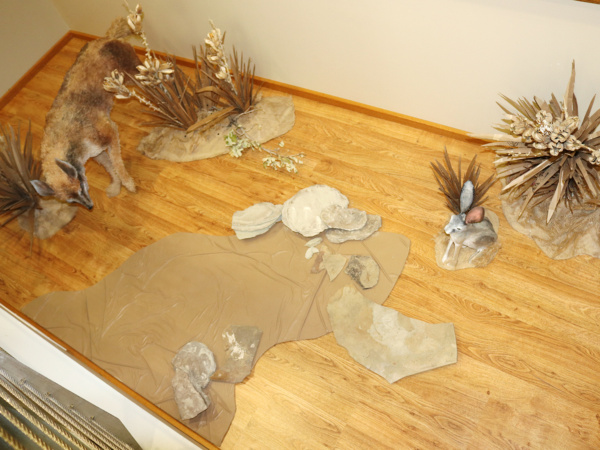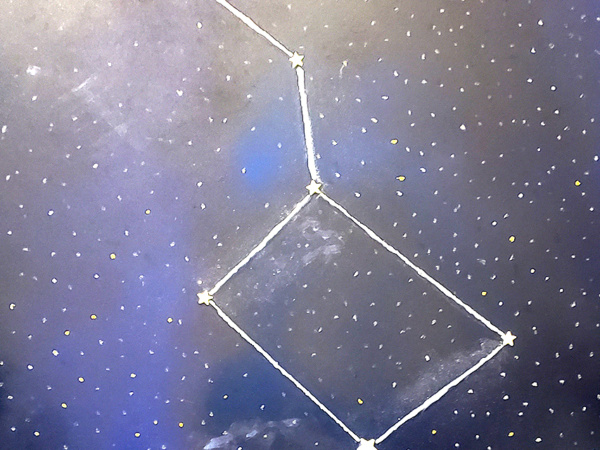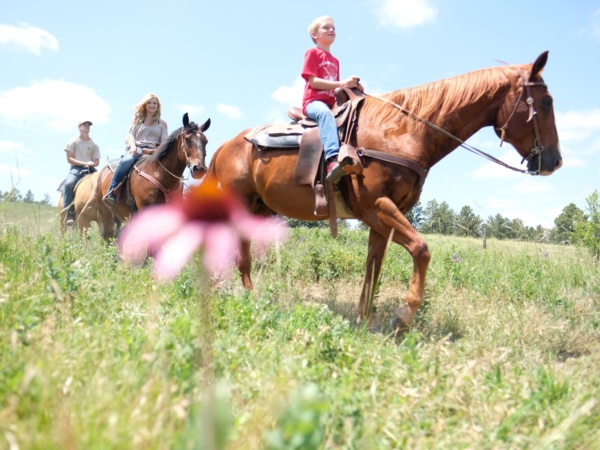By Kerri Rempp
Discover Northwest Nebraska
Residents of and visitors to Northwest Nebraska in June have probably heard – and possibly took part in – the Crazy Horse Volksmarch, an annual event that brings together thousands for an organized hike up Crazy Horse Memorial in the Black Hills of South Dakota. And now, volkssporting has come to Northwest Nebraska.
German for “sport of the people,” volkssporting includes non-competitive activities like walking and biking with fun, fitness and friendship for all ages and abilities the focus. America’s Walking Club, the national volkssporting organization, oversees 200 clubs and 2,500 events nationwide annually, including the Crazy Horse Volksmarch.
Northwest Nebraska has launched three nationally-sanctioned volksmarch trails classified for either year-round or seasonal use and will host its own Volksmarch event in May.
Gary Danford, a local volksmarcher who discovered the sport overseas years ago, pitched the idea of bringing the sport to the region in 2021, and Discover Northwest Nebraska and the Northwest Nebraska Trails Association have worked closely with the Nebraska Wander Freunde Trailblazers club in Omaha to navigate the process.
Danford was working in Germany when he was introduced to volksmarching, giving him the opportunity to see the countryside and meet people.
“It’s not strenuous exercise. You just enjoy yourself; there’s no rush,” Danford said, explaining what attracts him to volksmarching. Regular volksmarchers can also use special books to collect stamps from the areas they’ve walked and track their progress, so it becomes a personal challenge, too, Danford said.
“Volksmarching opened our eyes to so many new things in our own community. We quickly expanded to seeking out these great walking opportunities across the state of Nebraska, throughout the U.S. and other countries. There are so many things to see that can only be experienced on foot,” said Sandy Spaulding, a member of the Trailblazers Club, who has helped coordinate the effort in Northwest Nebraska.

The end result is two year-round trails and one seasonal trail that volksmarchers can complete on their own schedules and an organized event planned this spring. The year-round and seasonal trails in Northwest Nebraska are the only volksmarch trails in the state west of North Platte, and the organized event will be the only one in the state west of Grand Island, according to a search on ava.org, the website for America’s Walking Club.
“Having sanctioned Volksmarch trails and an event supports the NNTA’s mission to promote non-motorized trails in Northwest Nebraska and will help showcase our beautiful trails to many who may not have known of them before,” said NNTA chairman Brittany Helmbrecht. “We have numerous opportunities for outdoor exploration in this area and the opportunity to share them through the Nebraska Wander Freunde Trailblazers Club is a major success for our organization and Northwest Nebraska.”
Whether individuals were introduced to volkssporting overseas or in the U.S., one thing they all agree on is the value of the camaraderie they find on the trails.
James, a member of the Trailblazers Club in Omaha, discovered volksmarching in Germany and as of last September has completed 1,000 volksmarches since 1971.
“We took our two sons, enlisted about 15 of my fellow soldiers that Saturday on a Labor Day weekend,” he said of the annual Barbarosa Marsch. “We volksmarched with a thousand other Germans in the foothills of the Spessart Mountains. We enjoyed it and the comradeship. We went again the next day to another volksmarch and were hooked.”
Dudley and Kim, also members of the Trailblazers, met each other on the volksmarch trail in northern France. The pair spent the walk chatting and getting to know each other and eventually married.
“So, there is truth to my claim that I met my wife wandering aimlessly in a French vineyard,” Dudley said. “It is an anniversary ever time we attend a walk!”
With a global pandemic in recent years, the chance to get outdoors and enjoy the company of others has served as an important touchstone for Jill, also a Trailblazer member.
“During the pandemic I was limited in other ways but walking with my volkssport friends kept me connected with a social network. It was like a lifeline for me,” she said.

All of Northwest Nebraska’s volksmarch trails have an online start box established at https://my.ava.org/find-an-event.php that walkers can use, or maps and stamps for each are available during business hours at the Chadron Chamber of Commerce for a remote physical start.
Agate Fossil Beds National Monument Trail
The seasonal trail at Agate Fossil Beds National Monument in Sioux County south of Harrison takes walkers through the High Plains mixed grass prairie of the Niobrara River valley and out to fossil sites, where they can view ancient fossils in-situ.
Before or after your walk, explore everything Agate Fossil Beds has to offer. Established in 1965, Agate Fossil Beds National Monument exhibits and walking trails that detail the ancient mammals that called the region home, ranging from small rhinos and gazelle camels to burrowing land beavers and the large Moropus, an animal that resembled a cross between a horse and a ground sloth. The park is also home to the famed Cook Collection, which showcases the relationship between rancher James Cook and Native American Chief Red Cloud and other Plains Indians.
Open April 1 to Sept. 30, the trail is rated 1A, a relatively easy walk with an overall elevation gain of less than 200 feet.
Chadron State College Trail
The year-round trail at Chadron State College begins at the city’s Chadron War Memorial Park and winds its way along scenic paved and dirt trails on and south of the Chadron State College campus. The north end of the trail takes hikers past pollinator-attracting wildflower beds, water catchments for windbreaks of native trees, and new student housing landscapes filled with high plains low-water-use plants.
The buffalo grass trail carries pedestrians past an intentionally developed water-conserving landscape of the college’s Rangeland Complex.
As the trail continues west, buttes and other rock formations in Dawes County can be seen. The historic C-Hill, which was built in 1924, towers over the route and a quick jaunt to the top offers views of the southern Black Hills of South Dakota. Just past C-Hill and as the trail meanders to the south, hikers can stop by the CSC Labyrinth, a project designed and created by the Art department and community volunteers. The labyrinth was built in an abandoned water cistern that once served as Chadron’s water storage tank and provides respite in nature and an opportunity for reflection and contemplation to those who enter.
The Mari Sandoz Heritage Trail, the concrete trail locally known as the “Snake,” winds through the Thompson Natural History Preserve and is highlighted by crossing the upper dam at Briggs Pond and coursing to a scenic overlook of the city at the top. Benches allow users to rest and take in views. This trail connects back to the grass trail, traversing above the college’s new track and past the starting line of the cross country course, or brings users out to the recently-renovated football stadium and Chicoine Center, home of the college’s athletic department.
The trail is rated 2B, with some moderate climbing and an elevation change of 200-1,000 feet.
Each year, America’s Walking Club designates official special programs, encouraging walkers to find trails that match the criteria. Chadron State College Trail walkers can Walk With America’s Veterans, a special program that encourages volksmarchers to walk for fitness while discovering the ways veterans are honored for their military service. The Chadron trail begins in War Memorial Park at the Statue of Liberty replica placed there in 1950 by the Boy Scouts and rededicated by the World War II committee in 199.
The trail also takes users past the CSC Clock Tower for the Clock Tower program, which challenges walkers to find public clocks while enjoying volksporting.

White River Trail
The White River Trail connects the Crawford City Park with Fort Robinson State Park, running along a former railroad track and crossing the White River. It provides stunning views of the tree-covered buttes and access to a wide range of military, pioneer and Native American history at Fort Robinson State Park. The park is the site of Crazy Horse’s surrender and death, housed Buffalo Soldiers, cavalry, K-9 training units, a German prisoner-of-war camp and more.
Stagecoach tours, jeep and horseback rides, two museums and a variety of other activities offer additional stops before or after your volksmarch.
The trail is designated as a year-round one and is rated as 1B, an essentially level walk.
Plans call for the White River Trail, which is built on a single grade and rated 1B, to eventually be part of the Great American Rail Trail, which will one day run coast-to-coast.
Northwest Nebraska Volksmarch
In conjunction with the launch of the sanctioned trails, Discover Northwest Nebraska, Northwest Nebraska Trails Association, Panhandle Public Health District and Chadron Community Hospital are organizing a volksmarch event, planned for May 21 from 8 a.m. – 2 p.m. Registration information for the event can be found at http://www.netrailblazers.club/walks-and-events/2022-walk-calendar/.
For more information on volksmarching, visit one of the following sites: www.netrailblazers.club, www.ava.org, or www.discovernwnebraska.com/volksmarch/.
